- Revenue Cycle Management
- COVID-19
- Reimbursement
- Diabetes Awareness Month
- Risk Management
- Patient Retention
- Staffing
- Medical Economics® 100th Anniversary
- Coding and documentation
- Business of Endocrinology
- Telehealth
- Physicians Financial News
- Cybersecurity
- Cardiovascular Clinical Consult
- Locum Tenens, brought to you by LocumLife®
- Weight Management
- Business of Women's Health
- Practice Efficiency
- Finance and Wealth
- EHRs
- Remote Patient Monitoring
- Sponsored Webinars
- Medical Technology
- Billing and collections
- Acute Pain Management
- Exclusive Content
- Value-based Care
- Business of Pediatrics
- Concierge Medicine 2.0 by Castle Connolly Private Health Partners
- Practice Growth
- Concierge Medicine
- Business of Cardiology
- Implementing the Topcon Ocular Telehealth Platform
- Malpractice
- Influenza
- Sexual Health
- Chronic Conditions
- Technology
- Legal and Policy
- Money
- Opinion
- Vaccines
- Practice Management
- Patient Relations
- Careers
11 Inexpensive European Discoveries
With favorable exchange rates, now is a great time to explore Europe -- even if you're on a budget. These 11 money-saving tips will help you avoid emptying your wallet.
It’s been a very long time since the Euro and the US Dollar were this close in value, making now an ideal time price-wise to explore Europe. But after checking out flight prices just to get over “the pond”, it may seem like the Eurocation of your dreams is still out of reach.
Not so! After nearly three years of living in Belgium, we’ve discovered some great economical ways to enjoy Europe without breaking the bank. Here are some of our favorite inexpensive discoveries that have kept us — and our guests—entertained and well fed.

In Bucharest, Romania, my husband and I were quizzed by a skeptical local, “Why did you choose to come to Romania for your vacation?” Our instant response was, “Because Ryanair flies here.” The low-cost airline is definitely not for everyone, but once you know the rules and what you’re getting into, there’s no better way to travel. If you don’t need to check a bag, can print your boarding passes out at home, don’t expect a beverage for free, and don’t mind a cattle call for boarding, Ryanair flights are quick and cheap. We’ve purchased roundtrip flights for two people for less than 150 euros. Other low-cost airlines like Wizz and EasyJet similarly forgo luxury (ok, sometimes basic comforts) to offer cheap flights to a host of destinations. The one other caveat is often the flights land in secondary airports, further away from city centers than major airports.

10. Kiss Cider
When Americans think of hard ciders, there are plenty of American, English, and Scottish brands that come to mind, but they can get expensive. The tastiest cider we have ever had costs around 1.50 euros in the grocery store, and 3 euros at a bar, for a half liter. Kiss Cider is brewed by Estonian beer maker Saku (another delicious, low-cost beverage option), and comes in several flavors, including original pear, blueberry-raspberry, and pomegranate-lime. This refreshing beverage is so good, I have already started to look for an importer for when we move back to the US.
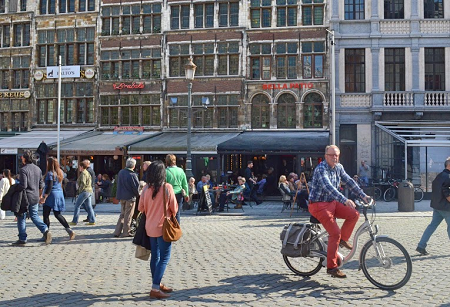
9. Bicycle Share
In many major European cities, and even some lesser cities, bicycle sharing is the way to get around town. In Antwerp, the Velo system is run by the city, and costs less than 40 euros for a year-long subscription. While day and week passes are not as economical (a day pass is 3.80 euros and a week pass is 9 euros), they still beat paying for multiple rounds of public transportation or a taxi, which can get very pricey very fast.

8. 99-Cent Brie
As a Wisconsinite, cheese is in my blood (and sometimes on my head, but that is another story). The discovery of delicious, fresh, 99-cent brie in my local grocery store was like the heavens opening up and the dairy gods smiling down on me. I paid in the $6 to $7 range in the US for a much smaller slice of the wheel, and this grocery-store label option tastes just as good. Pro-tip: On a baguette, slice up some brie, add sliced apples and honey, and you have a phenomenal, filling sandwich for less than 5 euros.
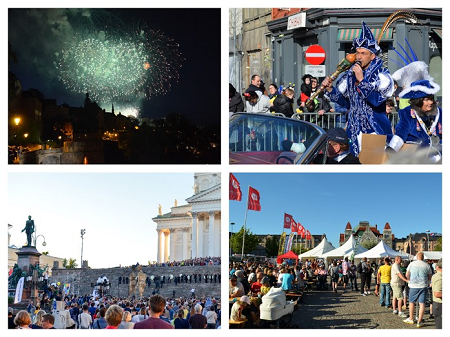
7. City Festivals
Museums are fabulous for learning about the history and culture of a new country … but so are city festivals, and generally, they have no entrance fees. Major cities around Europe will have a week or weekend dedicated to celebrating the people and the culture of their cities — there are free concerts, open markets, tours offered free or just for that week, local food vendors, folk dance demonstrations, etc. In Riga, Latvia, we saw the Latvian National Ballet perform for less than 20 euros, watched a 24-hour basketball tournament with teams from all around the hoops-mad city, and toured a former KGB office building that had not been open to the public since the Soviets left Riga in 1993. Planning a visit around a city festival means lots of opportunities to experience what the locals enjoy and what their history means to them.
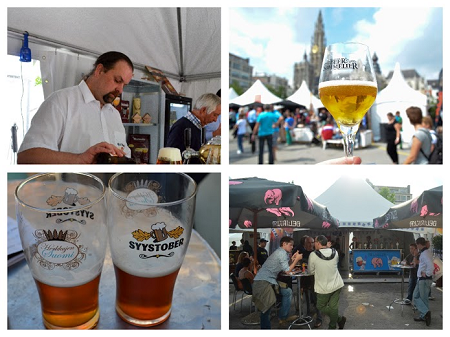
6. Beer Festivals
“Eat, Drink, and Be Merry,” could be the unofficial motto for the European Union (well, at least those first two parts). Beer festivals are a fantastic way to enjoy an afternoon or evening; you can meet people, try new things, and, of course, drink good beer. Often you’ll find live music, local food vendors, or even cooking demonstrations at these festivals. Most operate similarly, where you put a “deposit” down on a commemorative glass, usually 2 or 3 euros, then take your glass to the different vendors and buy tastes of beer at a generally discounted price. At the end of the event, if you don’t want to keep your commemorative glass, you turn the vessel in and get part of your deposit back. We tend to try to keep our glasses, as useful souvenirs are my favorite souvenirs.
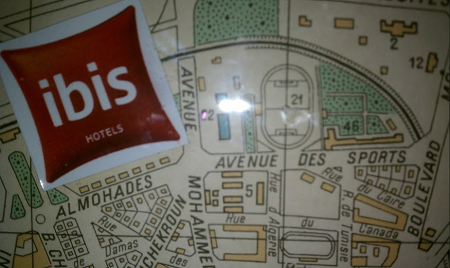
5. Ibis
When you’re not interested in sharing a room with strangers at a hostel, but not quite ready to budget for the Park Plaza Hotel, the Ibis chain of hotels is an economical middle option. Similarly to Ryanair, the bare-bones approach is taken for these hotel rooms, but if you know what to expect, it’s everything you’ll need. The hotel chain also offers options near airports as well as in city centers. Sometimes while out adventuring in the world, it’s nice to know exactly what to expect when you arrive at the hotel; leave the surprises for other parts of the journey.
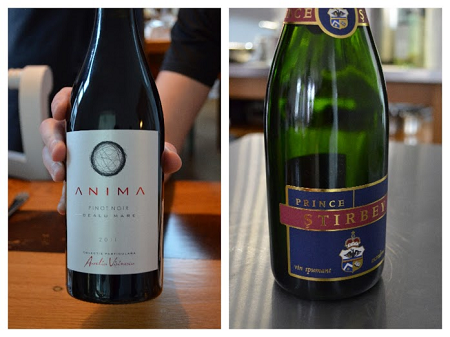
4. Local Wine
Spain, France, and Italy are known around the world for their wines, but some of the most delicious, economical wines we have found have been in countries like Romania and Slovenia. Slovenian wine is produced just enough to meet the demands of the local people, so very little of it is exported. Romanian wines range from deep, smooth Merlots to a Champagne-like sparkling white. Export prices for Romanian vintages might be a bit higher than local prices, but the quality still goes above and beyond the cost.
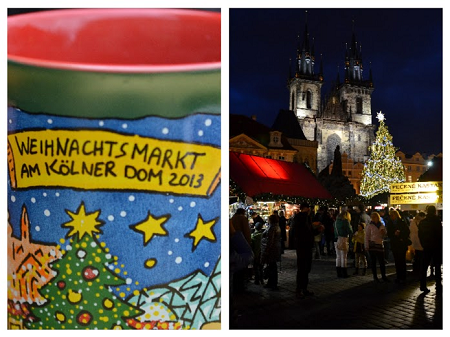
3. Christmas Markets
Christmas Markets are a German tradition that have spread throughout Europe into a favorite pastime every December. Like city festivals and beer festivals, Christmas Markets usually do not require an entrance fee, and offer local foods, drinks, and handcrafts. Also, like the beer festivals, you give a “deposit” for your glühwein mug (and you will want to drink the glühwein), which doubles as a souvenir if you don’t mind losing your deposit. In December, major city centers are turned into medieval markets with straw-thatch roof booths, folk dancing, blacksmiths making unique trinkets, and pigs roasting on open spits. It’s very hard not to be in the Christmas spirit when the whole town has turned out to walk in the cold, under the twinkling lights.

2. Zeeland Oysters
One of the things we’ve experienced over and over again is that delicious food does not have to empty your wallet. Seafood can get pricey in restaurants, but in Zeeland, the southwest province of Holland, you’ll find lobster, oysters, and mussels at their freshest — and cheapest. In towns like Yerseke, a walk along the shore looks over oyster farms, with crates upon crates of the delicious shellfish. Some of the fishmongers have restaurants, where you can get a selection of enormous oysters from 3 euros and up. You’ll feel like a Rockefeller, without the top hats and the monocles.
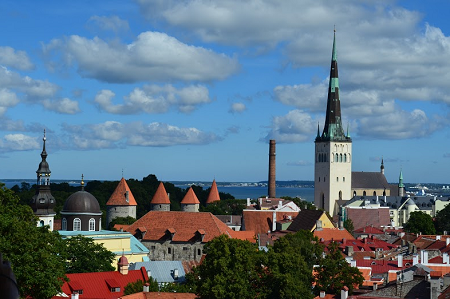
1. The Baltic States
As our time living in Europe draws to a close, one of our most common conversations is “Where should we go back to?” We won’t have as many vacation days, be on the same time zone, or be able to get to Europe for a short weekend, so where would we really like to invest a good chunk of our travel time? The answer has consistently been the Baltic States; Latvia, Lithuania, and Estonia. As of the beginning of this year, all three nations are on the Euro currency, which is much easier to travel in between. The people of the Baltics are warm, friendly, speak excellent English, and are happy to welcome you to their countries. The food is excellent, the hotels are comfortable, and the history is visible everywhere. With lots of natural beauty in addition to vibrant cities, these three countries offer something for everyone, generally at a price everyone can agree on.
Photos by Melinda and Peter Caliendo, except the Ryanair photo, which is courtesy of the airline.
